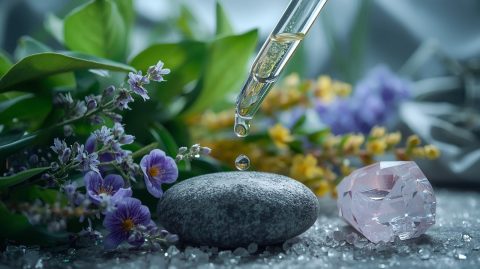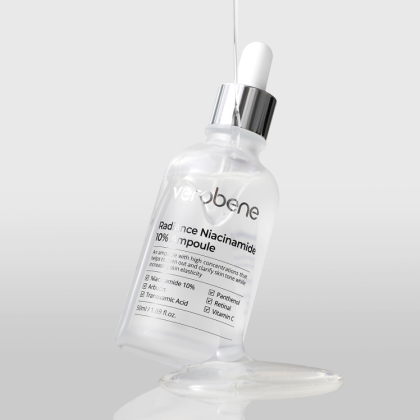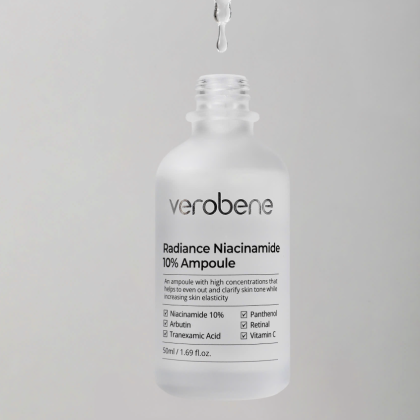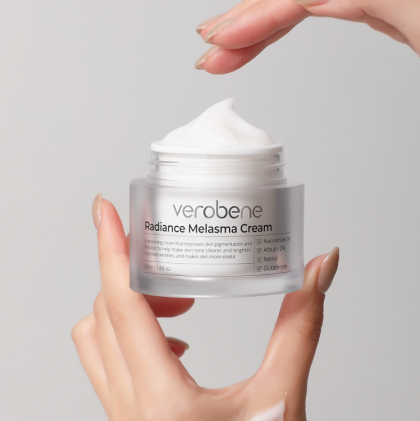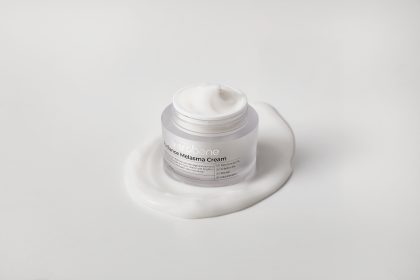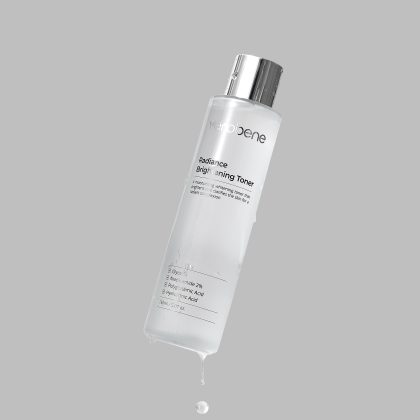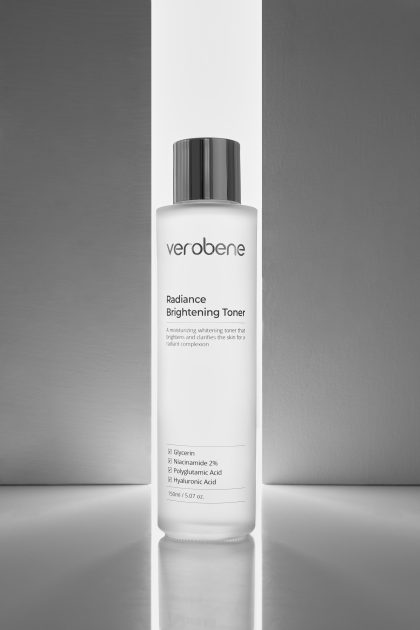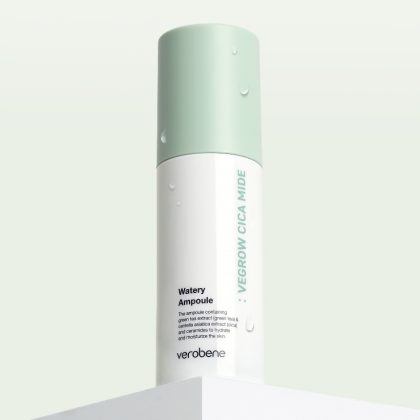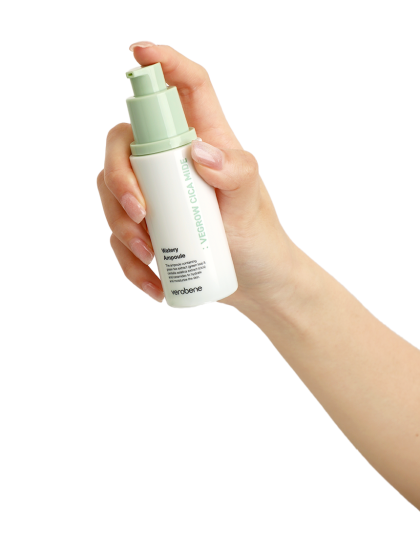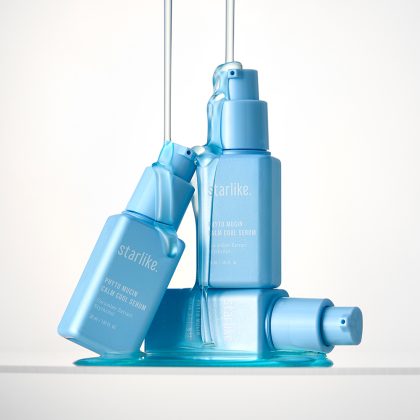Why is it considered underrated?
Niacinamide (vitamin B3) was long seen more as a dietary supplement than a skincare active. But since the early 2000s, it has gained increasing popularity thanks to research confirming its multifunctional benefits. Today, niacinamide is part of hundreds of skincare products, from cleansers to serums — and for good reason.
What makes this ingredient so special?
Anti-aging effect
Clinical studies, including split-face trials with 5% niacinamide, have shown significant reductions in fine lines, hyperpigmentation, redness, and sallowness, as well as increased elasticity (PMC, PubMed).
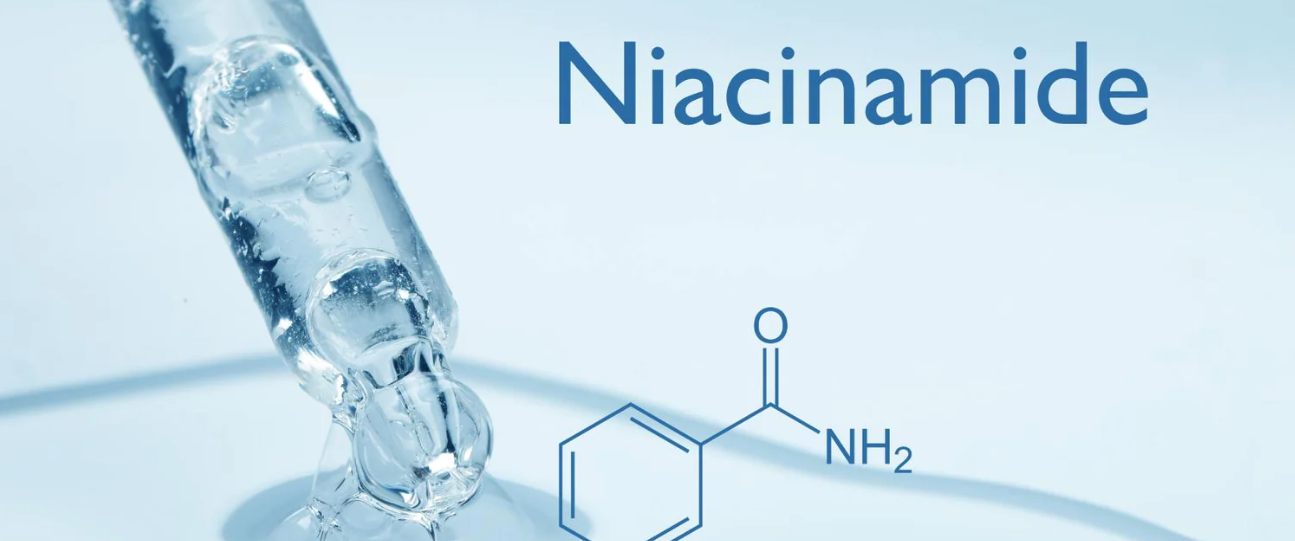
Cleansing, pore-tightening, and oil balance
Even concentrations of 2–5% reduce sebum production and minimize pore size — an effect comparable to clotrimazole, but without side effects (GQ).
Barrier support and hydration
Niacinamide helps the skin retain moisture by supporting ceramide and fatty acid levels, leaving skin smoother and better protected (Vogue, Real Simple, Cleveland Clinic).
Antioxidant and anti-inflammatory properties
Niacinamide effectively fights free radicals and reduces inflammation in conditions such as acne, rosacea, and irritation (MDPI, Healthline).
Safety and versatility
Well tolerated by most users — concentrations up to 10% generally do not cause irritation. Suitable for all skin types, including sensitive and acne-prone (Real Simple, Who What Wear, The Sun).
How to use it?
- Optimal concentration: 2% to 10%, most often found in serums and creams.
- Can be used at all stages of skincare, both morning and evening, even alongside sunscreen.
- Combines well with retinol, vitamin C, and hyaluronic acid. The only precaution: use in moderate amounts, especially for sensitive skin (The Ordinary).
Why is niacinamide included in Starlike Niacinamide 21 Pore Serum?
The Starlike Niacinamide 21 Pore Serum is a powerful treatment created to address enlarged pores, dull tone, and oil imbalance. That is why its formula contains 21% niacinamide — working as:
- an anti-aging and brightening active,
- a neutralizer of irritation and inflammation,
- a solution for texture refinement and pore reduction.
This ingredient gives the serum depth and effectiveness, making it a targeted yet gentle choice.
References
- Clinical effects of 5% niacinamide — reduced wrinkles, pigmentation, and improved elasticity (New York Post).
- Reduced sebum and pore size with 2–5% niacinamide (Practical Dermatology).
- Barrier and hydration support (WebMD, CeraVe).
- Antioxidant and anti-inflammatory benefits (MDPI, Vogue).
- Safety and growing popularity of niacinamide ( PMC, The Sun).
References
- Gehring W. Nicotinamide in dermatology. J Cosmet Dermatol. 2004;3(2):88–93. DOI: 10.1111/j.1473-2165.2004.00058.x
- Bissett DL, et al. Topical niacinamide reduces yellowing, wrinkling, red blotchiness, and hyperpigmented spots in aging facial skin. Int J Cosmet Sci. 2005;27(2):83–92. DOI: 10.1111/j.1467-2494.2004.00241.x
- Draelos ZD. The multifunctional role of niacinamide in dermatology. Cutis. 2019;104(5):308–312. PMC8389214
- Surjana D, et al. Oral nicotinamide and skin cancer chemoprevention: A review of efficacy and safety. Photodermatol Photoimmunol Photomed. 2013;29(5):262–272. DOI: 10.1111/phpp.12061
- Hakozaki T, et al. The effect of niacinamide on reducing sebum excretion rate and casual sebum levels. J Cosmet Sci. 2002;53(2):151–160. PubMed
- Rattanawiwatpong P, et al. The effects of topical niacinamide on acne and sebum. J Cosmet Dermatol. 2016;15(3):252–257. DOI: 10.1111/jocd.12230




